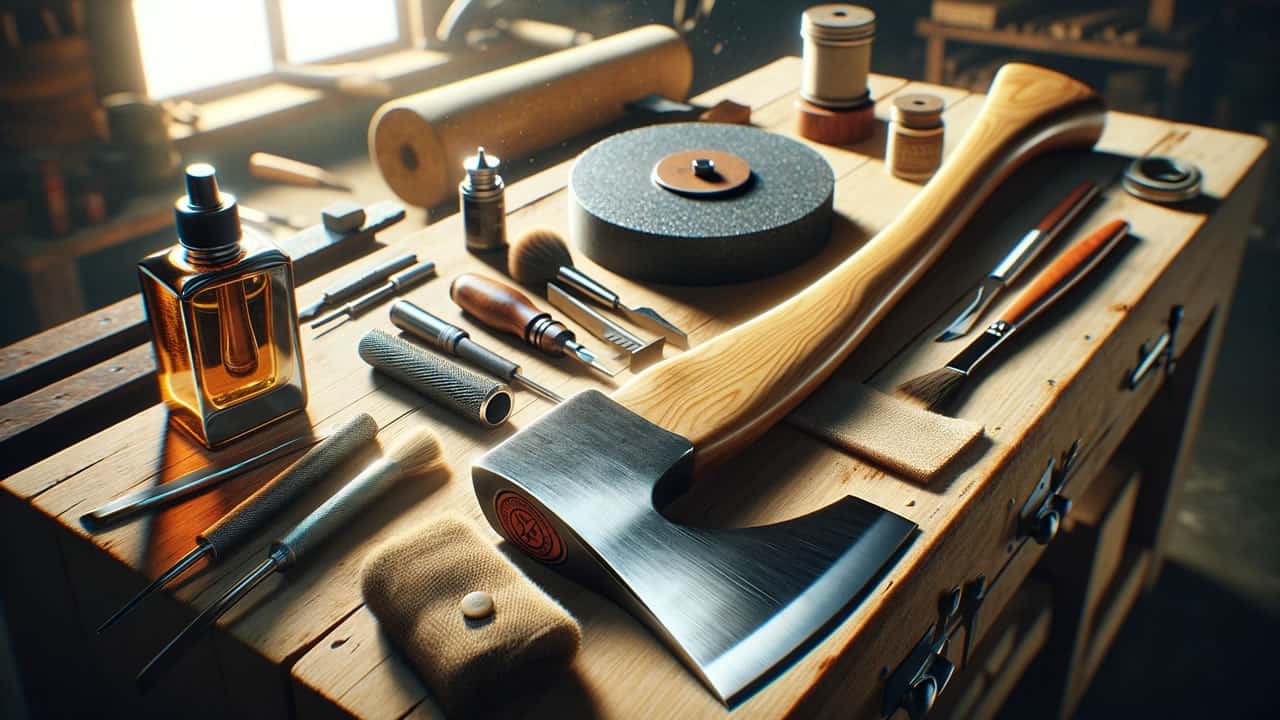For anyone who relies on an axe, whether for camping, wood chopping, or even as a part of their profession, understanding how to maintain it is crucial. A well-maintained axe not only ensures efficiency and safety but also extends the tool’s lifespan. In this guide, we’ll delve into the essential aspects of axe maintenance, including cleaning, sharpening, and proper storage.
Understanding Your Axe
Before jumping into maintenance, it’s important to understand the components of your axe. The main parts are the head (which includes the blade or bit) and the handle (haft). Different materials require different care techniques. For instance, a wooden handle and a fiberglass handle won’t be maintained in the same way.
Cleaning Your Axe
Regular cleaning is vital for maintaining your axe’s condition. Resin, sap, and dirt can accumulate on the axe head, leading to corrosion.
- Wipe After Use: After each use, wipe the blade with a clean cloth to remove moisture and debris.
- Deep Cleaning: Occasionally, you’ll need to do a more thorough cleaning. Use warm, soapy water and a scrub brush to gently clean the axe head. For stubborn resin, a bit of mineral spirits on a rag can be effective.
- Handle Care: If your axe has a wooden handle, wipe it down with a damp cloth. For fiberglass handles, soapy water will suffice.
- Dry Thoroughly: Ensure that your axe is completely dry before storing it to prevent rust and decay.
Sharpening Your Axe
A sharp axe is a safe and efficient axe. Sharpening an axe is a skill that can be easily learned and incorporated into your maintenance routine.
- Inspect the Edge: Before sharpening, inspect the edge for any nicks or damage. Small nicks can be worked out during the sharpening process.
- Use the Right Tools: A flat file is ideal for initial sharpening, followed by a sharpening stone for honing the edge. For finishing, a strop can be used.
- Secure Your Axe: Clamp the axe in a vise with the edge facing up for stability.
- File Methodically: Using the flat file, follow the original angle of the edge. File in one direction, from the head towards the edge. Work evenly, maintaining consistent pressure.
- Honing With a Sharpening Stone: After filing, use a sharpening stone to hone the edge. Wet the stone with water or oil and move it in a circular motion over the edge. Do this on both sides of the blade to ensure an even edge.
- Stropping for Sharpness: Finally, use a leather strop to remove any burrs and polish the edge. This step is crucial for achieving a razor-sharp edge.
Proper Storage
How and where you store your axe significantly impacts its longevity.
- Keep it Dry: Store your axe in a dry place to prevent rust and handle decay. Humidity is the enemy of both metal and wood.
- Use a Sheath: Always store your axe with a sheath over the blade. This protects the edge and ensures safety.
- Avoid Ground Contact: Never store your axe on the ground. Moisture and insects can damage the handle and the head.
- Hang it Up: If possible, hang your axe by the handle. This relieves pressure on the handle and keeps the axe safe from ground moisture.
Handling Rust and Corrosion
Even with good maintenance, axes can develop rust. It’s crucial to address rust immediately to prevent further damage.
- Remove Rust: Use a wire brush or sandpaper to scrub away rust. For tougher rust, a rust remover solution can be used.
- Oil the Head: After removing rust, apply a light coat of oil (like linseed oil) to the head. This creates a barrier against moisture and helps prevent future rusting.
Caring for the Handle
The handle is just as important as the head. A damaged handle can be dangerous.
- Check for Damage: Regularly inspect your handle for cracks, splinters, or looseness. A damaged handle should be replaced immediately.
- Oil Wooden Handles: To preserve a wooden handle, rub it with linseed or tung oil. This nourishes the wood and protects it from moisture.
- Tighten the Head: If the head becomes loose, it’s often possible to tighten it. For wooden handles, this can sometimes be achieved by soaking the head in water to swell the wood.
Safety First
Always remember that an axe is a dangerous tool. Proper maintenance not only extends the life of your axe but also ensures your safety and that of those around you.
- Regular Inspection: Before each use, inspect your axe for any signs of wear or damage.
- Use Proper Technique: When using your axe, always employ proper technique to prevent accidents.
- Educate Yourself: If you’re new to axes, consider taking a course or watching instructional videos on axe maintenance and use.
Conclusion
Axe maintenance is an ongoing process. By regularly cleaning, sharpening, and properly storing your axe, you ensure its effectiveness, safety, and longevity. Remember, a well-maintained axe is a reliable companion in any outdoor adventure or task. Take pride in your tool, and it will serve you well for years to come.
